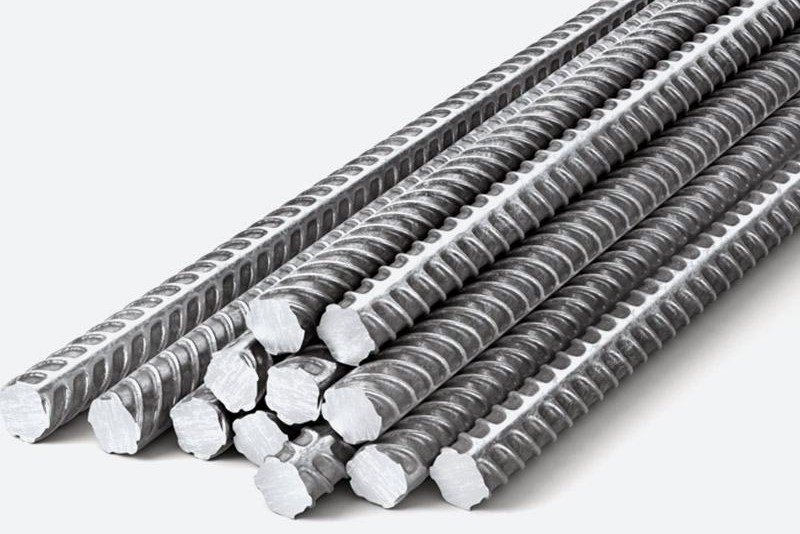Our Catalogue
| Item | Description | Weight per Meter (kg/m) |
|---|---|---|
| 8-32mm | Grade BS 500 and are SABS and ISO approved. Avalable in 6m, 9m, 12, & 13m legnths | ~ |
| Item | Description | Weight per Meter (kg/m) |
|---|---|---|
| 8-32mm | Grade BS 500 and are SABS and ISO approved. Avalable in 6m, 9m, 12, & 13m legnths | ~ |
Use Cases

Reinforced Concrete Structures
- Foundations: Rebars provide crucial support in foundations, resisting tensile stresses and preventing cracking that can compromise the structure's integrity.
- Columns and Beams: These structural elements rely on rebars to handle bending and shear forces, ensuring stability and load-bearing capacity.

Reinforced Concrete Structures
- Slabs and Walls: Rebars in slabs and walls distribute loads and prevent cracking due to shrinkage or external forces.
- Bridges and Overpasses: These structures experience heavy loads and environmental stresses, making rebars vital for their strength and longevity.
- Dams and Tunnels: Rebars reinforce these large-scale structures, enabling them to withstand water pressure and earth movements.

Other Applications
- Retaining Walls: Rebars reinforce retaining walls, preventing soil erosion and collapse.
- Precast Concrete Elements: Rebars are incorporated into precast concrete components like pipes, culverts, and bridge girders for added strength.
- Masonry Structures: Rebars can be used to reinforce masonry walls, increasing their resistance to lateral forces.
- Decorative Applications: Rebars are sometimes used in architectural features, sculptures, and furniture for their aesthetic appeal.

Why Rebars are Important
- Increased Tensile Strength: Concrete is strong in compression but weak in tension. Rebars provide the necessary tensile strength to resist pulling forces.
- Improved Durability: Rebars enhance the overall durability of concrete structures by minimizing cracking and preventing water infiltration, which can lead to corrosion.
- Enhanced Structural Integrity: Rebars contribute to the overall structural integrity of buildings and infrastructure, ensuring they can withstand loads and environmental factors.

Reinforced Concrete Structures
- Foundations: Rebars provide crucial support in foundations, resisting tensile stresses and preventing cracking that can compromise the structure's integrity.
- Columns and Beams: These structural elements rely on rebars to handle bending and shear forces, ensuring stability and load-bearing capacity.

Reinforced Concrete Structures
- Slabs and Walls: Rebars in slabs and walls distribute loads and prevent cracking due to shrinkage or external forces.
- Bridges and Overpasses: These structures experience heavy loads and environmental stresses, making rebars vital for their strength and longevity.
- Dams and Tunnels: Rebars reinforce these large-scale structures, enabling them to withstand water pressure and earth movements.

Other Applications
- Retaining Walls: Rebars reinforce retaining walls, preventing soil erosion and collapse.
- Precast Concrete Elements: Rebars are incorporated into precast concrete components like pipes, culverts, and bridge girders for added strength.
- Masonry Structures: Rebars can be used to reinforce masonry walls, increasing their resistance to lateral forces.
- Decorative Applications: Rebars are sometimes used in architectural features, sculptures, and furniture for their aesthetic appeal.

Why Rebars are Important
- Increased Tensile Strength: Concrete is strong in compression but weak in tension. Rebars provide the necessary tensile strength to resist pulling forces.
- Improved Durability: Rebars enhance the overall durability of concrete structures by minimizing cracking and preventing water infiltration, which can lead to corrosion.
- Enhanced Structural Integrity: Rebars contribute to the overall structural integrity of buildings and infrastructure, ensuring they can withstand loads and environmental factors.

Reinforced Concrete Structures
- Foundations: These structural elements rely on rebars to handle bending and shear forces, ensuring stability and load-bearing capacity.
- Columns and Beams:These structural elements rely on rebars to handle bending and shear forces, ensuring stability and load-bearing capacity.

Reinforced Concrete Structures
- Slabs and Walls: Rebars in slabs and walls distribute loads and prevent cracking due to shrinkage or external forces.
- Bridges and Overpasses:These structures experience heavy loads and environmental stresses, making rebars vital for their strength and longevity.
- Dams and Tunnels:Rebars reinforce these large-scale structures, enabling them to withstand water pressure and earth movements.

Other Applications
- Retaining Walls: Rebars reinforce retaining walls, preventing soil erosion and collapse.
- Precast Concrete Elements: Rebars are incorporated into precast concrete components like pipes, culverts, and bridge girders for added strength.
- Masonry Structures: Rebars can be used to reinforce masonry walls, increasing their resistance to lateral forces.
- Decorative Applications: Rebars are sometimes used in architectural features, sculptures, and furniture for their aesthetic appeal.

Why Rebars are Important
- Increased Tensile Strength: Concrete is strong in compression but weak in tension. Rebars provide the necessary tensile strength to resist pulling forces.
- Improved Durability: Rebars enhance the overall durability of concrete structures by minimizing cracking and preventing water infiltration, which can lead to corrosion.
- Enhanced Structural Integrity:Rebars contribute to the overall structural integrity of buildings and infrastructure, ensuring they can withstand loads and environmental factors.

Reinforced Concrete Structures
- Foundations: These structural elements rely on rebars to handle bending and shear forces, ensuring stability and load-bearing capacity.
- Columns and Beams:These structural elements rely on rebars to handle bending and shear forces, ensuring stability and load-bearing capacity.

Reinforced Concrete Structures
- Slabs and Walls: Rebars in slabs and walls distribute loads and prevent cracking due to shrinkage or external forces.
- Bridges and Overpasses:These structures experience heavy loads and environmental stresses, making rebars vital for their strength and longevity.
- Dams and Tunnels:Rebars reinforce these large-scale structures, enabling them to withstand water pressure and earth movements.

Other Applications
- Retaining Walls: Rebars reinforce retaining walls, preventing soil erosion and collapse.
- Precast Concrete Elements: Rebars are incorporated into precast concrete components like pipes, culverts, and bridge girders for added strength.
- Masonry Structures: Rebars can be used to reinforce masonry walls, increasing their resistance to lateral forces.
- Decorative Applications: Rebars are sometimes used in architectural features, sculptures, and furniture for their aesthetic appeal.

Why Rebars are Important
- Increased Tensile Strength: Concrete is strong in compression but weak in tension. Rebars provide the necessary tensile strength to resist pulling forces.
- Improved Durability: Rebars enhance the overall durability of concrete structures by minimizing cracking and preventing water infiltration, which can lead to corrosion.
- Enhanced Structural Integrity:Rebars contribute to the overall structural integrity of buildings and infrastructure, ensuring they can withstand loads and environmental factors.
